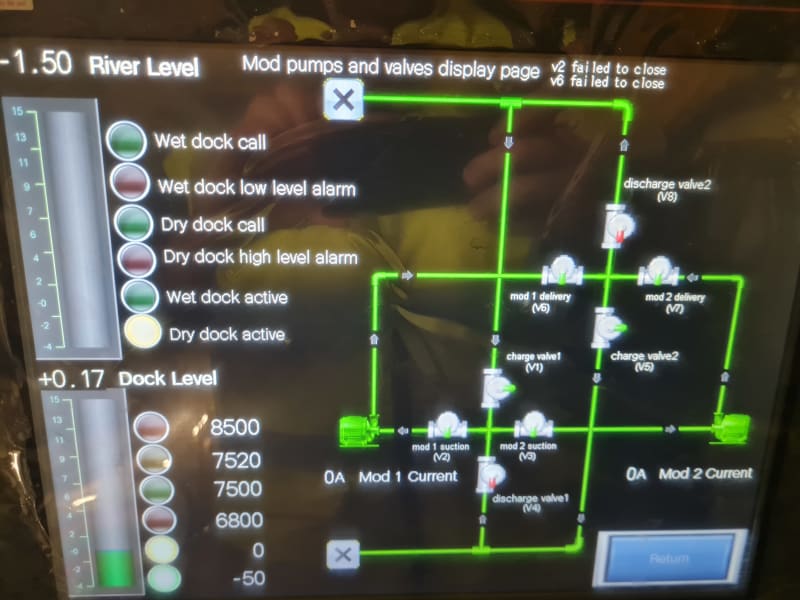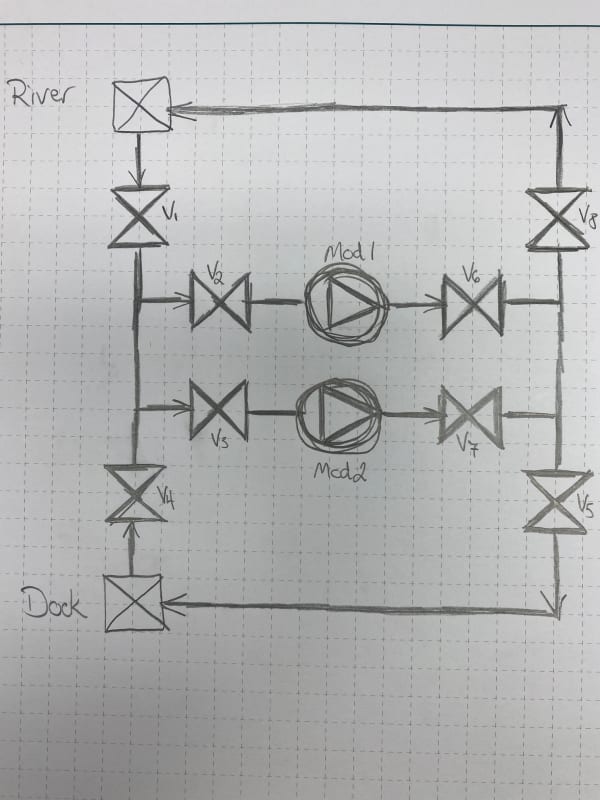DiamondDave
Mechanical
Hi guys,
I work at a dry dock facility and its bothering me that I dont know as much about our pumps as id like and I also have questions about our set up.
Should all pumps have a gauge on suction and discharge side and if so how do I read the information on them? What can it tell me?
Is there tests and data I should gather and make note off to later use to diagnose faults? Such as time to pump a certain level of water out of a dock?
Will the tide level pumps are pumping against make a difference to pump times?
Regarding the schematic attached is it better to have 2 pumps running or just one? Will 2 pumps reduce discharge time or will they fight against each other and end up worse?
I am sure I will have more questions! Thanks in advance
I work at a dry dock facility and its bothering me that I dont know as much about our pumps as id like and I also have questions about our set up.
Should all pumps have a gauge on suction and discharge side and if so how do I read the information on them? What can it tell me?
Is there tests and data I should gather and make note off to later use to diagnose faults? Such as time to pump a certain level of water out of a dock?
Will the tide level pumps are pumping against make a difference to pump times?
Regarding the schematic attached is it better to have 2 pumps running or just one? Will 2 pumps reduce discharge time or will they fight against each other and end up worse?
I am sure I will have more questions! Thanks in advance


